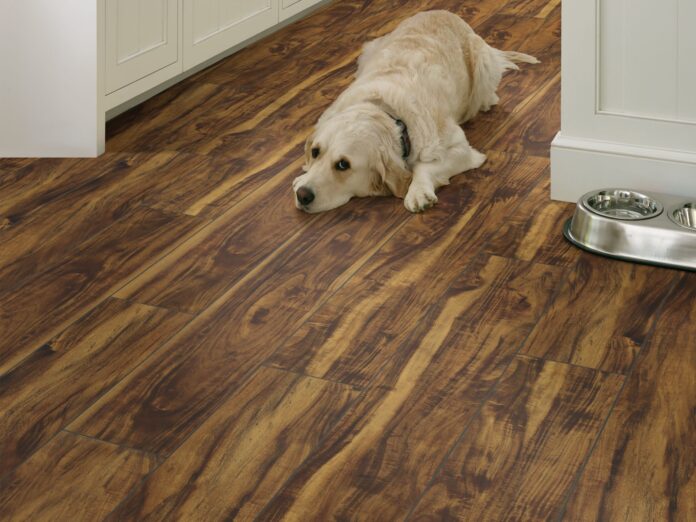Your choice of flooring material is a crucial aspect of your interior design. There are many different flooring options on the market today. They include vinyl, laminate, linoleum, and ceramic. Each material has its own pros and cons when it comes to how hard it is to install, use, and take care of. For its many advantages, vinyl flooring is arguably the most popular option for homeowners. Before getting started on your flooring project, you should educate yourself on your vinyl flooring options. Most people prefer Amtico Luxury Vinyl Flooring due to its lovely look, which also upgrades the resale value of any home.
It may have started as a material used in making household and industrial items, but today, vinyl has become the most widely used flooring option. This is mainly because it provides convenience, resiliency, attractiveness, affordability, and, most importantly, ease of installation and maintenance. It has made its way into many homes and commercial buildings for its benefits, but there’s more to the flooring material than meets the eye.
Types of Vinyl Flooring
Vinyl flooring is versatile, and like most flooring options, it comes in different types and styles. There are three main types: planks, tiles, and sheets. In the vinyl installation, each has distinctive benefits, which you should consider before deciding which type best suits your project.
- Vinyl planks: Commonly referred to as Luxury Vinyl Planks (LVP) or Luxury Vinyl Tiles (LVT), vinyl planks are the original floating vinyl floor. They offer the appearance and durability of hardwood flooring for only a fraction of the cost. Installation is very easy and can be done directly above the subfloor. Vinyl planks are dirt-resistant and 100% waterproof, which makes them ideal for residential and commercial applications.
- Vinyl tiles: These are squares that resemble classic marble tiles, but are more economical. They are available in different styles and construction types imprinted in various designs to give users a range of customizing options. They can also be easily laid in unique patterns to give the room unique contrast. Vinyl tiles are available in floating floor and glue down forms.
- Vinyl sheet: Vinyl sheet flooring is nearly seamless since the sheet vinyl comes in large, wide rolls of six to twelve feet width. However, the huge size of the rolls limits the design and installation options and makes repair expensive since you have to change the entire sheet even if it’s only slightly damaged. The vinyl sheet is also very thin and doesn’t add much thickness when laid over the subfloor using adhesive. The water-resistant nature of vinyl sheet flooring makes it ideal for areas prone to moisture like bathrooms and mudrooms.
Vinyl Finishes
Vinyl flooring is generally soft. A padded layer can also be added to make walking more comfortable for your feet. The floor also has a degree of elasticity, which makes it resilient and quieter to walk on. The strength and durability of vinyl floors depend on the layer finish. There are three types of vinyl finishes.
- Vinyl no-wax finish: This is the grade-three vinyl finish. It’s the lightest, making it ideal for flooring areas with the least foot traffic and exposure to moisture and dirt.
- Urethane finish: This grade-two vinyl finish is heavier and more durable. It’s easy to clean and resistant to scuffing and is tough enough to withstand moderate foot traffic.
- Enhanced urethane finish: This is the grade-three finish. It’s thick and tough enough to handle the heaviest foot traffic. It’s also very resistant to stains and scratches and maintains a lasting luster with proper care.
To pick the right vinyl flooring option, you have to consider the decor of the room and, most importantly, the function.
Pros and Cons of Vinyl Flooring
Like any other flooring material, vinyl has upsides and drawbacks. The most important vinyl flooring pros and cons include the following:
Pros
Vinyl is a great choice for flooring in both homes and businesses because it has a number of benefits. Some of the most important pros include:
- Variety: Vinyl flooring is available in a broad range of sizes, designs, and colors, from faux wood to stone vinyl. The vinyl floors can also be mixed, matched, and arranged in any unique custom design that you desire.
- Ease of installation: Compared to other flooring materials, installing vinyl flooring is pretty easy. Loose lay and gluing down methods are commonly used. Vinyl floors can be easily installed to almost any subfloor, be it hardwood, concrete, plywood, or pre-existing vinyl.
- Low maintenance: Vinyl floors are resistant to soiling, so cleaning them with soap and water is very easy.
- Durability: Vinyl flooring may resemble wood flooring, but it’s more durable. It can last for ten to twenty years if installed and maintained correctly. Although its finishing appears luxurious, its material can withstand high humidity, temperature, wear, scratch, and impact. It’s put through rigorous durability tests to make sure it meets the highest standards.
- Pet-friendly: The durability and ease of cleaning make vinyl flooring ideal for pet owners.
- Thickness: Vinyl flooring is generally thick and soft. This makes walking on it quite comfortable and produces minimal noise while walking on it.
Cons
Despite their popularity, vinyl floors have several drawbacks. The cons of using vinyl flooring include the following:
- Potential emissions: Polyvinyl chloride (PVC) is used to make vinyl flooring. Newly installed flooring can emit toxic gases that can cause eye irritation and breathing difficulties to susceptible people. Manufacturers have addressed this problem by using less PVC to make their products.
- Can be difficult to remove: When adhesive is used to glue down the vinyl floor, removing it can be very challenging.
- Resale value: Vinyl flooring has no impact on a house’s resale value.
- Challenging subfloor preparation: Vinyl floor installation is a crucial determinant of uniformity, smoothness, and durability of your floor. The subfloor must be prepared to remove any lumps, nail heads, or protrusions that will show through the vinyl, and eventually cause tearing and holes.
- UV degradation: Vinyl isn’t UV-resistant, so it can’t be used to open floor spaces since sunlight will discolor it over time.
Conclusion
When used in the right way, vinyl flooring is a great way to cover the floors of homes and businesses. Whether you need to floor a new house or remodel an old one, the affordability, durability, and low maintenance of vinyl flooring far outweigh the cons.





















